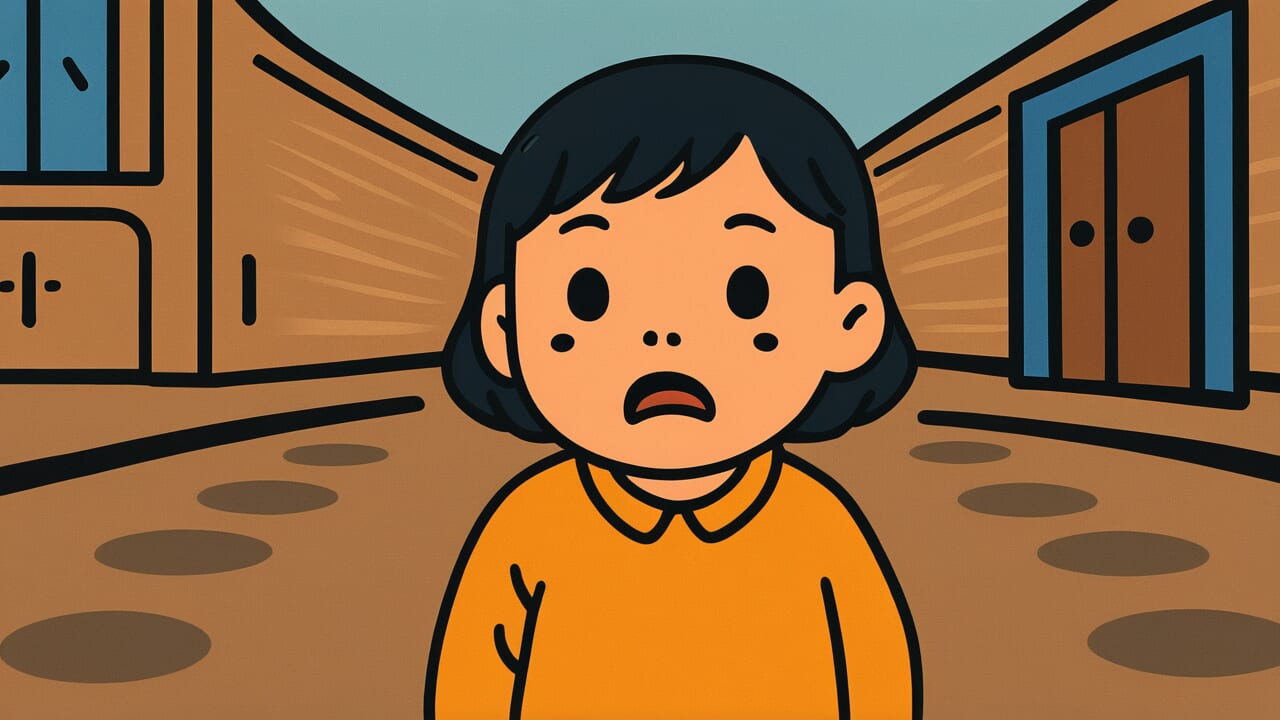How to Read “Even a crying child looks at eyes”
Naku ko mo me wo miru
Meaning of “Even a crying child looks at eyes”
“Even a crying child looks at eyes” means that even people who seem to lack good judgment will observe their surroundings and behave appropriately.
This proverb shows that people who appear to lack judgment actually have the ability to carefully observe situations and people around them. They can then adjust their behavior accordingly.
Just as a crying baby who can do nothing but cry will still change behavior based on a parent’s expression, humans have an instinctive ability to read the atmosphere.
You use this proverb when you notice someone who seems foolish or immature is actually making good situational judgments. It expresses the realization that “this person seems thoughtless, but they’re actually observing carefully.”
The proverb also serves as a warning not to look down on others. Even today, it teaches us the importance of recognizing that everyone has at least basic situational awareness. We should never underestimate people.
Origin and Etymology
No clear written records explain the origin of this proverb. However, we can make interesting observations from how the phrase is constructed.
The expression “crying child” refers to a young child who cannot yet speak well. Such a child can only cry according to their emotions. This represents someone who lacks judgment and acts purely on instinct.
Meanwhile, “looks at eyes” describes the act of observing someone’s expression and appearance to judge the situation.
By combining these two elements, the meaning emerges: “Even the most immature person who lacks judgment will observe their surroundings and adjust their behavior.”
This proverb likely comes from traditional Japanese child-rearing observations. Parents noticed that even crying babies would change how they cried or stop crying based on their parents’ expressions.
The most likely explanation is that this saying spread as a lesson based on human observation during the Edo period. It contains the wisdom of ancestors who understood human nature.
They recognized that even people who seem foolish possess at least minimal situational judgment abilities.
Usage Examples
- That new employee usually seems absent-minded, but when the boss is in a bad mood, he keeps his distance. “Even a crying child looks at eyes” is really true
- Our youngest child is spoiled, but when Dad is tired, she stays quiet. “Even a crying child looks at eyes”—even children can read the atmosphere in their own way
Universal Wisdom
“Even a crying child looks at eyes” reveals the universal nature of human instinctive adaptation abilities. No matter how immature someone appears, they possess minimum observation and judgment skills needed to survive.
This fact represents the survival strategy humanity acquired through long evolution.
This proverb has been passed down for generations because it offers deep insight into human duality. People who seem foolish on the surface are actually observing their surroundings carefully.
This fact teaches us the danger of judging people only by appearance or first impressions. At the same time, it shows basic trust in humanity—that everyone has abilities worthy of respect.
The proverb also rejects the simple division between “fools” and “wise people.” Even those considered lacking in judgment can behave appropriately according to situations.
This fact suggests that human intelligence is too complex to measure with a single standard. Even without academic knowledge, practical wisdom gained through daily life certainly exists.
Our ancestors carefully observed people in daily life and understood their essential nature. The recognition that no one should be underestimated and everyone possesses some kind of strength was wisdom for respecting each other within communities.
When AI Hears This
When a crying baby looks at someone’s eyes, remarkable information processing happens in their brain. Developmental psychology shows that babies around 9 months old acquire an ability called “joint attention.”
This is the ability to focus attention on the same object as another person. In other words, there’s a qualitative shift from one-way emotional expression through crying to two-way communication.
The baby looks at eyes to confirm “Does this person notice my condition?”
What’s interesting is that this eye-looking behavior isn’t just visual contact. Research shows babies try to read the direction of attention and intentions by looking at eyes.
Looking at eyes while crying means performing advanced parallel processing—evaluating “Is this person someone who will help me?” while in an emotional overflow state.
In other words, the social judgment system continues functioning even during panic.
From an attachment theory perspective, repeating this “crying while looking at eyes” pattern teaches babies the basic trust that “my distress is understood by others.”
The more times they look at eyes and receive responses, the more stable attachment formation becomes. This proverb intuitively captured that the foundation of human sociality is actually built through such subtle interactions within the first year of life.
Lessons for Today
This proverb teaches modern people the importance of not judging others by appearance. A coworker who seems incompetent might actually be sensitively detecting workplace relationships.
A child who struggles with studies might excel at reading friends’ feelings.
Modern society tends to evaluate people by clear indicators like education, titles, and specialized knowledge. However, this proverb reminds us that human abilities exist that cannot be measured by such superficial standards.
Everyone understands and responds to situations in their own way.
When you feel someone “lacks judgment,” stop and think. Are they really not thinking about anything? Perhaps they’re observing different aspects using different methods than you.
Having this perspective enriches human relationships. Recognizing someone’s unique sensitivity and observation skills is the first step toward mutual respect.
Trust that everyone possesses some kind of strength creates warm communication.



Comments